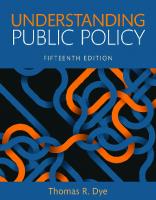
In the case of the edition I am going to discuss now, that will be more literally true than it is of the Norton Anthology itself. Abrams said of the Norton Anthology, in the classroom, in a student's dormitory room, or under a tree. If it is not "new", it is still valuable, indeed necessary, to produce texts that can be read, as M. I view the relation between electronic and print publication as one of complementarity rather than of competition, and adduce the fact that there has been no end to the making of books as the Web pages and CD-ROMS have appeared: witness, for example, the new editions of Hazlitt and De Quincey by Pickering and Chatto, and the new anthologies of the Romantic period by Blackwell, Harcourt, and Longman. user-friendlines-the old-fashioned printed book remains unsurpassed, which is why Northrop Frye called it the most democratic of media.

I hope that the publication of the present article on the Web will prevent me from being misunderstood as hostile to the phenomenon of electronic publication when I state what I trust is self-evident, that for ease of access and use-i.e. My readers will be familiar with several ongoing projects, including British Women Playwrights around 1800 and the remarkable Blake Archive, which make exactingly edited texts and images easily accessible on the Web. This production, remarkable both in its amount and in its variety, has not been confined to the creation of new texts, or for that matter to the recovery of old texts, but has also-and perhaps most excitingly-manifested itself in the development of new kinds of texts which exploit the new digitizing technologies.
The norton reader 14th edition publisher series#
If the book is part of a series, you can include the series name at the end of the citation.In the the last decade the field of Romantic studies, for all its traditional self-doubts, has implicitly staked a claim to its legitimacy in the form of textual production. Optional Elements: If the book is part of a multi-volume set, you can list the number of volumes at the end of the citation. For works on more than one page, use the abbreviation pp. For works that appear on one page, use the abbreviation p. Page Numbers (Location): If you are citing a work in an anthology or a chapter from a book, include the page numbers for the location. Spell out the word Press for nonacademic publishers with Press in their name. Use the abbreviation P for Press or UP for University Press for academic presses. Omit business words (Company, Co., Corp., Inc.). Publisher: You no longer need to include the city of publication. If using a book from a multi-volume set, identify the volume number. Number: Refers to books with more than one volume.

Version: Refers to the book’s edition, either numbered or labeled. Other Contributors: Provide the contributor’s name and role.

Use quotation marks for chapter titles and the title of works in an anthology. Italics or Quotes: Italicize book titles. Title Page: Information for the citation should come from the Title Page or Copyright Page of the book, not the cover.Ĭapitalization: Capitalize each word in the title, but don't capitalize short words like articles or prepositions unless one is the first word of the title or subtitle ( The Mayor of Casterbridge, Roots: The Saga of an American Family). Look at the following tips to help you cite books.


 0 kommentar(er)
0 kommentar(er)
